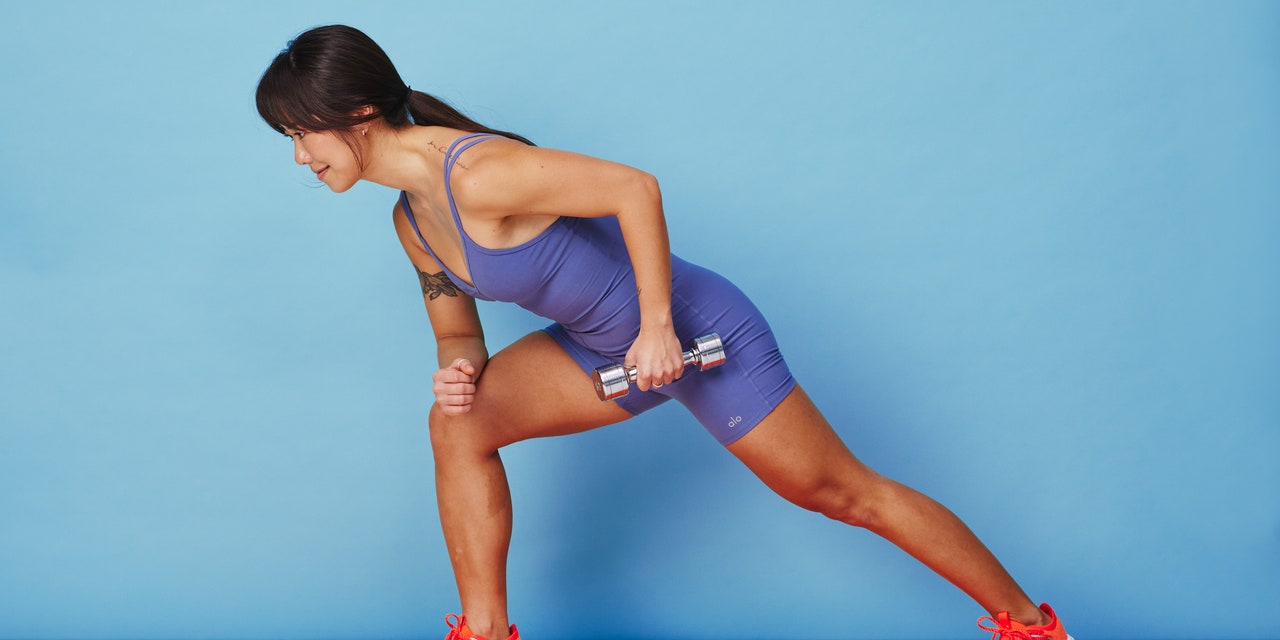
When building a workout routine, you really can’t go wrong with functional exercises, or ones that mirror actions you do in daily life. One prime example? The single-arm dumbbell row, an upper-body smoker that also sneakily hits your core—while providing a bunch of other benefits too.
Here, we dig into all the one-arm row has to offer, as well as expert tips for incorporating it into your fitness routine. Keep on reading for everything you need to know about your new favorite back-of-the-body exercise.
What muscles do single-arm dumbbell rows work?
The single-arm dumbbell row targets a bunch of upper-body muscles, Teddy Savage, CPT, national lead trainer for Planet Fitness in Baltimore, tells SELF. These include your latissimus dorsi (lats, the broadest of your back muscles), rear deltoids (a shoulder muscle), rhomboids (upper back muscles), and biceps (upper arm muscles). It also hits your trapezius (upper back and neck muscles).
There are a few different ways you can perform the move, but one of the most common variations involves getting into a staggered stance, hinging forward at your hips, and resting one hand on your quad. Thanks to this bent-over positioning—and the unilateral aspect in which just one side of your body is doing most of the work—you’ll also work your core muscles too.
What are the benefits of the single-arm row?
There’s a lot to love about this classic upper-body exercise. Do it regularly, and you can build strength in all of the muscle groups above. Plus, compared to a double-arm row or barbell row, the unilateral version “promotes a greater focus on muscle activation and form,” says Savage. That’s because when you’re working both sides of your body at the same time, “your dominant or stronger side tends to create momentum for your weaker side,” Savage explains. This can lead to muscle imbalances or overcompensation.
But when doing unilateral moves, like the single-arm row, you can place all your focus on activating the muscles needed to complete the exercise correctly, thus upping your chances of good form (and building more balanced whole-body strength).
The unilateral aspect also makes this move a sneaky abs smoker: Your body wants to naturally rotate toward the side that’s holding the weight, but you have to really call on some core stability to prevent that. What’s more, the stance automatically tests your balance, which fires up your core stabilizers to prevent you from tilting to one side. And the bent-over posture, essentially a hip hinge, activates your core muscles in your lower back so they can help steady your spine and keep it in a flat position, explains Savage.
Another benefit: The single-arm row can contribute to better posture, since it strengthens important back muscles that help you sit or stand up straight, Savage says. Finally, because the motion is so similar to common life activities, like pulling a heavy door shut or tugging the starter cord on a lawnmower, it has strong carryover to a bunch of everyday pulling motions—making it a great functional exercise, he says.
What are some common mistakes people make?
Allowing your body to rotate when you pull can take the focus off the muscles you want to target and instead engage others that shouldn’t be the main movement drivers—say, like your lower back. To avoid this, when pulling the dumbbell back, really brace your core to prevent any twisting through your torso, says Savage.






